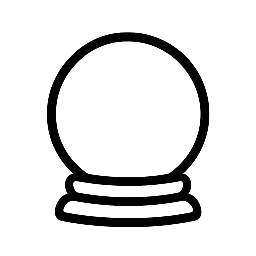The Sacred Geometry of Kabbalah: How Numbers Reveal Hidden Patterns and Meaning
In the mystical tradition of Kabbalah, numbers hold a profound significance, revealing hidden patterns and meaning that underlie the fabric of the universe. This sacred geometry, rooted in the ancient Hebrew scriptures, offers a profound understanding of the interconnectedness of all things, and the intricate web of relationships that binds the universe together. In this article, we will delve into the world of Kabbalistic numerology, exploring how numbers reveal the hidden patterns and meaning that lie at the heart of existence.
The Building Blocks of Creation
In Kabbalah, the numbers 1 through 10 are considered the building blocks of creation, each corresponding to a specific sephirah, or divine attribute, on the Tree of Life. This symbolic diagram, composed of interconnected nodes and pathways, represents the various levels of consciousness and the flow of divine energy that gives rise to the universe. The numbers, in turn, hold the key to understanding the intricate relationships between these sephiroth, and the ways in which they interact and influence one another.
- The number 1, for example, corresponds to the sephirah of Keter, representing the divine crown and the source of all creation. It is the number of unity, singularity, and the infinite.
- The number 2 corresponds to the sephirah of Chokhmah, representing wisdom and the divine plan. It is the number of duality, polarity, and the balancing of opposites.
- The number 3 corresponds to the sephirah of Binah, representing understanding and the divine blueprint. It is the number of trinity, harmony, and the reconciliation of opposites.
The Patterns of Creation
As we delve deeper into the numbers, we begin to see patterns and relationships that reveal the underlying structure of the universe. The numbers, it seems, are not just random or arbitrary, but are instead part of a intricate web of relationships that reflect the harmony and balance of the divine plan.
- The number 7, for example, is considered a number of completion and perfection, reflecting the seven days of creation, the seven colors of the rainbow, and the seven notes of the musical scale.
- The number 12, on the other hand, represents the zodiac, the 12 months of the year, and the 12 tribes of Israel. It is a number of completeness and fulfillment, reflecting the harmony and balance of the divine plan.
- The number 22, corresponding to the 22 paths on the Tree of Life, represents the flow of divine energy and the interconnectedness of all things.
The Code of Creation
The Kabbalistic tradition also reveals a deeper code, hidden within the numbers and letters of the Hebrew alphabet. This code, known as the “Gematria,” assigns numerical values to each letter, allowing for a deeper understanding of the underlying patterns and relationships that govern the universe.
- The word “Torah,” for example, has a numerical value of 611, reflecting its role as the central axis of the universe, and the source of all wisdom and knowledge.
- The word “Kabbalah” itself has a numerical value of 137, reflecting its role as a bridge between the spiritual and material worlds, and the mysteries of the universe.
Conclusion
The sacred geometry of Kabbalah offers a profound understanding of the hidden patterns and meaning that underlie the universe. Through the numbers and their relationships, we gain insight into the divine plan, and the intricate web of connections that binds all things together. As we delve deeper into this mystical tradition, we begin to see the world in a new light, as a complex and interconnected system, governed by a deeper code and pattern. The numbers, in turn, become a powerful tool for understanding the universe, and our place within it, revealing the hidden harmony and balance that underlie all of existence.

Leave a Reply